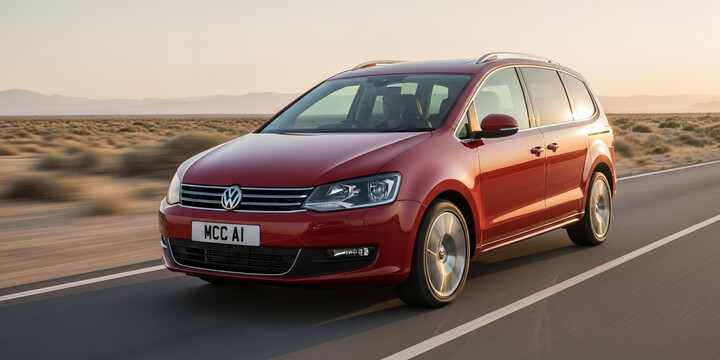
VOLKSWAGEN SHARAN (2000-10) 5DR MPV 2.0I S 7-SEAT
The VOLKSWAGEN SHARAN (2000-10) 5DR MPV 2.0I S 7-SEAT is a versatile and practical family vehicle that fits comfortably into the MPV (Multi-Purpose Vehicle) segment popular in the UK. Designed to accommodate up to seven passengers, this spacious model is ideal for families, group outings, or anyone needing extra seating and cargo space. Its reputation is built on reliability and ease of use, making it a popular choice for daily commuting, school runs, or longer trips with family and friends.
What sets the VOLKSWAGEN SHARAN apart is its user-friendly design, comfortable ride, and generous interior. Known for good build quality and a smooth driving experience, it often appeals to those looking for a dependable used MPV. Compared to its rivals, it offers practical features and a well-rounded balance of performance and economy, with an average mileage of around 115,832 miles indicating its durability over the years. Whether you're a first-time buyer or seeking a trusted family car, the VOLKSWAGEN SHARAN (2000-10) 5DR MPV 2.0I S 7-SEAT is a solid choice for versatile transportation needs.

average use

Based on the most recent mileage readings for the Volkswagen Sharan (2000-10) 5DR MPV 2.0I S 7-seater, the majority of vehicles (50%) are recorded to have driven between 100,000 and 110,000 miles. Notably, significant proportions also fall into the 80,000 to 90,000 miles, 110,000 to 120,000 miles, and even the 170,000 to 180,000 miles brackets, each comprising around 16-17% of the sample. This distribution suggests a concentration of vehicles around the 100,000-mile mark, but with notable numbers reaching higher mileage levels, including very high-mileage vehicles approaching 180,000 miles.

vehicle values

The data indicates that for a Volkswagen Sharan (2000-2010) 5-door MPV 2.0I S 7-seat model, the private sale prices are evenly split between two ranges. Specifically, 50% of such vehicles are valued at between £0 and £1,000, while the remaining 50% are valued between £1,000 and £2,000. This suggests a relatively concentrated price distribution, with no vehicles in higher or lower price brackets outside these two ranges, reflecting a possibly narrow valuation band for this model within the private sale market.

production years

The data indicates that all vehicles of the Volkswagen Sharan (2000-10) 5-door MPV 2.0I S 7-seat model in the sample are manufactured in 2001. This suggests a concentrated manufacturing period or possibly limited availability in other years within this range. It’s notable that no vehicles from other years between 2000 and 2010 are represented in this dataset.

colour popularity

The data indicates that among the 'VOLKSWAGEN SHARAN (2000-10) 5DR MPV 2.0I S 7-SEAT' vehicles, the main paint colours are evenly distributed across three options: Silver, Blue, and Green, each accounting for approximately one-third of the vehicles. This balanced distribution suggests no single dominant colour preference for this model during the specified period, highlighting a diverse range of aesthetic choices among owners.

ownership cycle

The data indicates that the majority of 'Volkswagen Sharan (2000-10) 5DR MPV 2.0I S 7-Seat' vehicles in the sample have been registered with four keepers, accounting for one-third (33.3%) of the vehicles. The remaining vehicles are distributed among five other registration counts, with two, ten, and six keepers each representing 16.7%, and three and two keepers also at 16.7%. This distribution suggests a relatively stable ownership pattern, predominantly involving four registered keepers, while a smaller proportion have experienced either minimal or multiple ownership changes.

engine choices

The data indicates that for the Volkswagen Sharan (2000-10) 5DR MPV 2.0I S 7-Seat model, the engine capacity is equally split between 1896 cc and 1984 cc, each accounting for 50% of the vehicles. Notably, all vehicles in this sample are petrol-powered, with 100% using petrol as their primary fuel type. This suggests a diverse engine size within the model but a uniform fuel type across the fleet.












